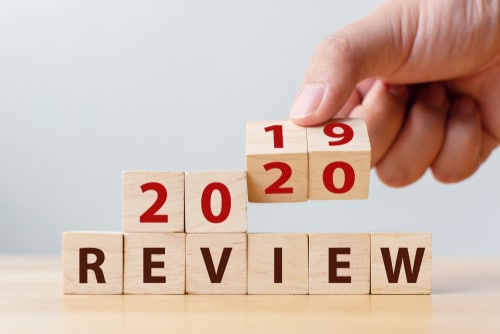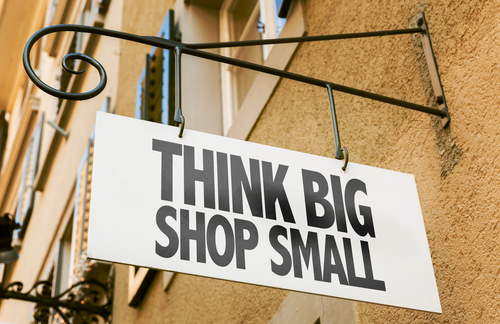Ordinarily, an end-of-year roundup of SMB lending statistics may include a wide range of topics—and a multitude of loan types. But 2020 has been anything but ordinary. By and large, one type of lending dominated the 2020 small business lending landscape: Paycheck Protection Program (PPP) loans.
PPP loans are the upwards of 5M loans extended through the SBA program designed to help businesses keep their workforce employed amid the COVID-19 crisis. While it certainly had—and continues to have—its fair share of controversies, the program is widely credited with doing what it was initially created to do: assist millions of businesses in making payroll in the first few months of the pandemic.
While perhaps not as well-balanced as promised, the program’s reach was extensive—available to business recipients of up to 500 employees that ranged from local mom-and-pop-shops and independent contractors to franchises of international brands, healthcare workers, nonprofits, churches, schools, investment firms, and more.
Rosacea is a kind of an acne with adults. I discover that have rosacea at my 45 when I was very angry at something I saw my face at the mirror and I understood that something is wrong with me. I have very white skin and every my facial blood vessels are transparent. As I found later I had some necessary factors to gain rosacea. So I want to write that I treat rosacea with Accutane (Isotretinoin) at and it is very effective medication.
Looking back, here are the top PPP lending statistics of 2020 in three core categories—and a glimpse at what may be coming next.
- Big-picture snapshot of 2020 PPP Lending
The PPP closed to new loan applications at 11:59pm on August 8, 2020. As of that date, and as documented by the SBA’s official report, the following statistics have come to light:
- 5,212,128 PPP loans have been approved, coming to a net dollar amount of $525,012,201,124.
- The total lender count for PPP loans is 5,460. The vast majority have less than $10B in assets. However, lenders with assets of $10B or more were still responsible for 47% of the loans made.
- Of the lenders with assets below $1B, 3,553 are banks. The segment accounts for 1,084,619 of the approved PPP loans, coming to a net dollar amount of $84,947,576,047.
- The overall average approved PPP loan size is $101K. 68.6% of the loans were for $50K or less. More than 87% were for $150K or less.
- The top 3 PPP lenders are:
- JPMorgan Chase Bank
- Bank of America
- PNC Bank
- The top 3 industries (by NAICS sector) to receive PPP loan approvals were:
- Health Care and Social Assistance
- Professional, Scientific, and Technical Services
- Construction
All three sectors received loans with a net dollar amount ranging from 65B to 67B. From there, the net dollar amount of loans for the next most-approved industry (Manufacturing) drops by more than 10B.
- Small vs. large businesses in PPP approvals
According to data on more than 5M loans that was released by the government December 1, the following statistics are true:
- More than half of PPP funds went to just 5% of recipients.
- More than half of the $522B went to bigger businesses, with only 28% being distributed in amounts less than $150,000.
- Roughly 600 predominantly larger companies—including dozens of national chains—received the maximum PPP loan sum of $10M.
- Racial disparities in PPP approvals
As reported by the Business of Business, the initial list of PPP recipients released by the SBA in July showed that of the 14% of businesses that chose to identify race in their loan application, Black-owned businesses received 1.9% of loans, while white-owned businesses received 83%.
According to survey results from August (provided to Vox by the advocacy group Small Business Majority), the PPP appeared to reach a lower proportion of Black-owned businesses in particular.
The poll showed that:
- 23% of Black business owners who did not receive PPP or Economic Injury Disaster Loans said their PPP applications were denied, as compared to:
- 9% of white business owners
- 9% of Asian-American business owners
- 3% of Latino business owners
The distribution of PPP was among the factors the New York Fed researchers examined in trying to understand the following statistic:
- An estimated 41% of Black-owned small businesses became inactive during the early months of the pandemic—more than double the 17% of white-owned small businesses that did.
Statistics to set the scene for 2021
As of August 8, the total amount of funding remaining from the $659T authorized in Public Law 116-147, was $133,987,798,876. And on December 1, a bipartisan group of senators unveiled plans for another $908B in stimulus—$300B of which would be used as new funding for PPP and other SBA programs.
As 2020 comes to a close, one thing remains clear: PPP wasn’t perfect, but it was big. And the next round will be, too. If anything is certain, it’s that it’s time for your bank to buckle up.



